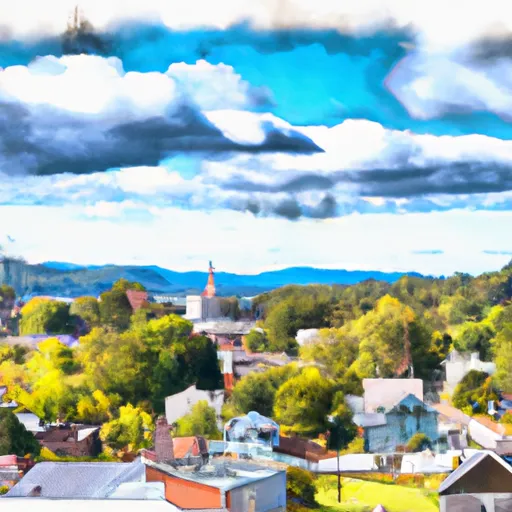-
 Snoflo Premium
Snoflo Premium
Get unlimited access to all our content
With no Ad interruptions! - Start Your Free Trial Login with existing account
Northfield-Falls
Eden Index
Climate
7.5
•
Recreation
3.8
•
Community
2.2
•
Safeguard
4.9/10

Northfield-Falls, Vermont is a charming town located in Washington County, with a population of around 5,000 residents. The climate in Northfield-Falls is characterized by warm summers and cold winters. The area experiences beautiful fall foliage and plenty of snowfall during the winter months, making it a popular destination for winter sports enthusiasts.
The town is nestled in the heart of the Green Mountains, with the Dog River flowing through it. The river provides ample opportunities for outdoor activities such as fishing, kayaking, and swimming. Northfield-Falls is also surrounded by vast forests, offering hiking and biking trails for nature lovers.
In addition to outdoor recreation, the town is home to Norwich University, the oldest private military college in the United States. This brings a unique blend of history and education to the community. Overall, Northfield-Falls, Vermont offers a great place to enjoy outdoor activities, experience the changing seasons, and appreciate the natural beauty of the region.
What is the Eden Index?
The Snoflo Eden Index serves as a comprehensive rating system for regions, evaluating their desirability through a holistic assessment of climate health, outdoor recreation opportunities, and natural disaster risk, acknowledging the profound impact of these factors on livability and well-being.
Climate Health Indicator (CHI): 7.5
Northfield-Falls receives approximately
1062mm of rain per year,
with humidity levels near 79%
and air temperatures averaging around
6°C.
Northfield-Falls has a plant hardyness factor of
4, meaning
plants and agriculture in this region thrive during a short period during spring and early summer. Most
plants will die off during the colder winter months.
By considering the ideal temperature range, reliable water supplies, clean air, and stable seasonal rain or snowpacks, the Climate Health Indicator (CHI) underscores the significance of a healthy climate as the foundation for quality living.
A healthy climate is paramount for ensuring a high quality of life and livability in a region, fostering both physical well-being and environmental harmony. This can be characterized by ideal temperatures, reliable access to water supplies, clean air, and consistent seasonal rain or snowpacks.
Weather Forecast
Streamflow Conditions
Richelieu
Area Rivers
Richelieu
Snowpack Depths
Richelieu
Reservoir Storage Capacity
Richelieu
Groundwater Levels
Recreational Opportunity Index (ROI): 3.8
The Recreational Opportunity Index (ROI) recognizes the value of outdoor recreational options, such as parks, hiking trails, camping sites, and fishing spots, while acknowledging that climate plays a pivotal role in ensuring the comfort and consistency of these experiences.
Access to outdoor recreational opportunities, encompassing activities such as parks, hiking, camping, and fishing, is crucial for overall well-being, and the climate plays a pivotal role in enabling and enhancing these experiences, ensuring that individuals can engage in nature-based activities comfortably and consistently.
Camping Areas
| Campground | Campsites | Reservations | Toilets | Showers | Elevation |
|---|---|---|---|---|---|
| Eden Rec Area | None | 1,251 ft | |||
| Silver Lake State Park | 40 | 1,385 ft | |||
| Gifford Woods State Park | 48 | 1,606 ft | |||
| Smugglers Notch State Park | 34 | 1,934 ft | |||
| Elmore State Park | None | 1,637 ft | |||
| Underhill State Park | None | 1,969 ft | |||
| Little River State Park | 100 | 731 ft | |||
| Calvin Coolidge State Park | 60 | 1,684 ft | |||
| Allis State Park | 26 | 1,875 ft |
Nearby Ski Areas
Catastrophe Safeguard Index (CSI):
The Catastrophe Safeguard Index (CSI) recognizes that natural disaster risk, encompassing floods, fires, hurricanes, and tornadoes, can drastically affect safety and the overall appeal of an area.
The level of natural disaster risk in a region significantly affects safety and the overall livability, with climate change amplifying these risks by potentially increasing the frequency and intensity of events like floods, fires, hurricanes, and tornadoes, thereby posing substantial challenges to community resilience and well-being.
Community Resilience Indicator (CRI): 2.2
The Community Resilience Indicator (CRI) recognizes that education, healthcare, and socioeconomics are crucial to the well-being of a region. The CRI acknowledges the profound impact of these elements on residents' overall quality of life. By evaluating educational resources, healthcare accessibility, and economic inclusivity, the index captures the essential aspects that contribute to a thriving community, fostering resident satisfaction, equity, and social cohesion.

